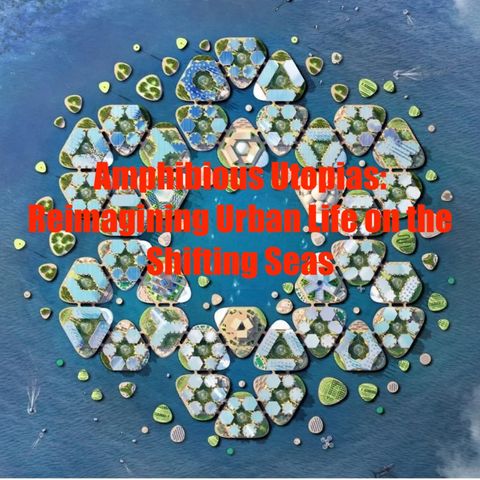Imagine a city bathed not in the golden glow of sunrise but in the shimmering embrace of the ocean. A futuristic metropolis, not chained to the constraints of land, but buoyant and free, dancing with the tides and whispering secrets to the waves. This isn't the stuff of science fiction; it's the ambitious vision of the Oceanix project, the world's first prototype for a sustainable floating city poised to redefine our relationship with the water. Nestled off the vibrant shores of Busan, South Korea, Oceanix isn't your typical concrete jungle. No towering skyscrapers pierce the sky, no endless traffic crawls below. Instead, hexagonal platforms, six in total, form the very foundation of this aquatic utopia. Crafted from weather-resistant steel and concrete, these platforms house an ecosystem of green spaces, residential units, workspaces, and leisure facilities, all gracefully bobbing on the gentle swells. But Oceanix is more than just a floating community; it's a bold experiment in sustainable living. Imagine a city that breathes with the rhythm of the ocean, where the wind whispers through solar panels, rainwater dances through biofiltration systems, and waste transforms into nutrient-rich soil for rooftop gardens. The city aims to be entirely self-sufficient, generating its own power through renewable sources, recycling and repurposing water, and minimizing its environmental footprint. This isn't a whimsical dream; it's a meticulously designed response to some of humanity's most pressing challenges. Rising sea levels, coastal erosion, and a burgeoning urban population threaten to overwhelm traditional land-based cities. Oceanix offers a tantalizing glimpse of a future where we adapt, not retreat, building new homes on the very surface of the rising tide. But building a city on water is no easy feat. Engineering marvels like wave-resistant platforms, adaptable modular units, and robust marine infrastructure are just the tip of the iceberg. Oceanix must grapple with complex challenges: the constant movement of the ocean, the harshness of the marine environment, and the logistical complexities of creating a fully functioning metropolis on a platform, not a plot of land. Yet, with each innovation, Oceanix proves its mettle. The "Living Lab," a smaller prototype platform launched in October 2022, serves as a real-world testing ground, gathering data on everything from wave impact to energy efficiency. This constant learning and adaptation form the bedrock of Oceanix's journey, steering the project towards its ambitious 2025 completion date. Beyond the engineering feats, Oceanix seeks to redefine how we live and interact with the sea. Imagine children learning marine biology in ocean-facing classrooms, artists drawing inspiration from the ever-changing canvas of the waves, and communities forging new relationships with the aquatic world that surrounds them. Oceanix isn't just a city; it's a cultural shift, a bridge between humanity and the vast, mesmerizing expanse of the ocean. Of course, questions linger. Can this utopian vision translate into reality? Will social and economic inequalities find their way onto these aquatic platforms? Can we truly replicate the intricate interconnectedness of land-based cities on a floating archipelago? These are questions that deserve thoughtful exploration, open dialogue, and continuous refinement of the Oceanix vision. But one thing is clear: Oceanix is a beacon of hope, a testament to human ingenuity and our unyielding spirit of exploration. It dares to ask not "if" we can live on water, but "how" we can create sustainable, thriving communities that dance with the waves, coexist with the tides, and redefine our relationship with the vast, mesmerizing expanse of the ocean. This is just the first page in the thrilling epic of aquatic cities. As Oceanix takes shape, and other projects like Blue Estate, SePod, and Seasteading continue to push the boundaries of possibility, we stand at the precipice of a new era, where the horizon isn't just a border, but a point of departure. Anchors aweigh, we set sail for a future where cities rise from the waves, weaving their stories into the very fabric of the ocean itself. Stay tuned for future articles in this series where we'll delve deeper into the specific challenges and triumphs of the Oceanix project, explore other aquatic city initiatives around the world, and engage in open conversations about the social, economic, and environmental implications of building our homes on the surface of the sea. Thanks for listening to Quiet Please. Remember to like and share wherever you get your podcasts.
mostra menos

